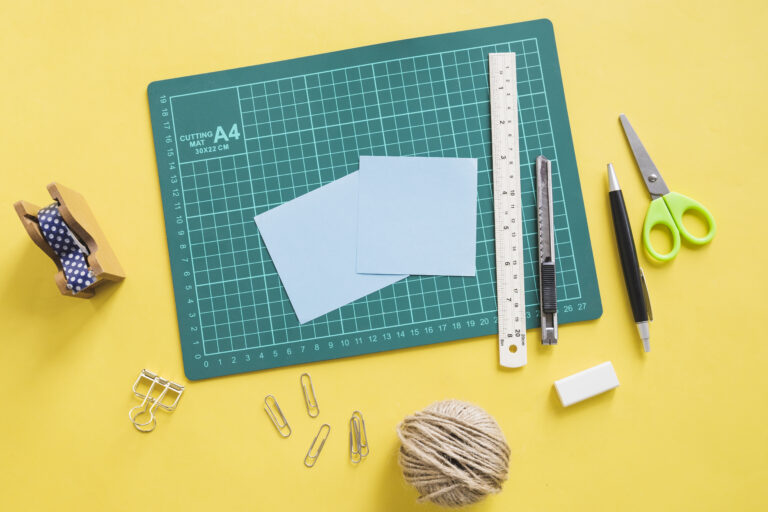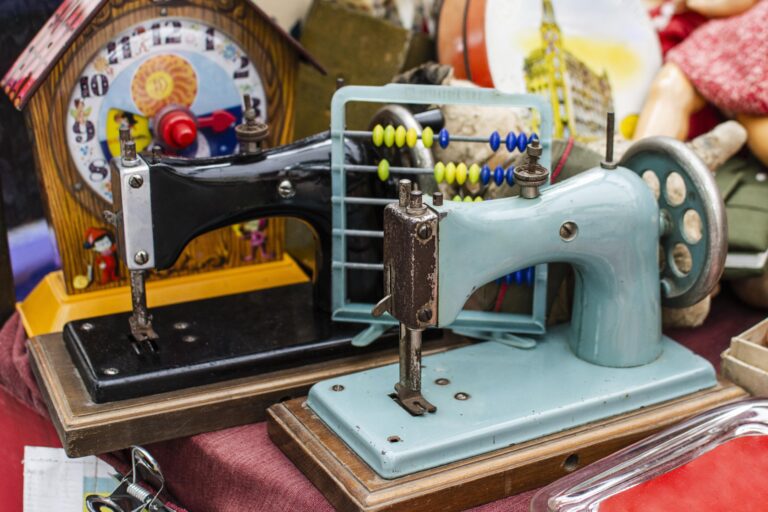11 Common Sewing Machine Problems And Solutions
It’s instructive to bring this information to you- the 11 common sewing machine problems and solutions.
The reason this post is apt is simply because so many people are unaware of how to differentiate the problem their sewing machine encounter on a daily basis.
Working with a sewing machine that won’t cooperate is the worst! It can be quite frustrating to deal with skipped stitches, broken or knotted threads, and shattered needles.
But, the majority of these problems may be fixed without having to send your equipment in for pricey repairs.
Causes of Your Sewing Machine Problems
Missing or Irregular Stitches
When using a sewing machine, irregular or skipped stitches might occur when the needle is inserted incorrectly, the needle is dull or curved, or you apply incorrect pressure to the presser foot during stitching.
Make sure your needle is not crooked or dull by checking it. To make sure the needle is put properly, you might also need to consult the handbook for your sewing machine.
If the needle is straight, pointy, and correctly inserted, consider applying extra presser foot pressure when sewing.
Damaged Thread
When forcefully jerked while sewing or if the thread is of low quality, some threads are more brittle than others and can break.
Also, even if you use high-quality thread, your thread is significantly more likely to break if you use the incorrect type of thread for your cloth.
Make sure the thread is of the highest quality and that you are using the appropriate type for the fabric type. If so, it’s critical to use a high-quality needle and to replace it frequently as the issue may be your needle.
Missing Needle
When using the wrong presser foot, inserting the needle incorrectly, or pushing the fabric too hard through the stitching, sewing machine needles can break.
Once more, make sure you’ve inserted the needle correctly in your sewing machine, watch out not to bunch your fabric when stitching, and use the right presser foot for your project.
Textile Stall
Your sewing machine’s teeth may not be raised high enough, or you may not be applying enough pressure to the presser foot, if your cloth stalls during stitching.
As you begin to stitch, raise your feed dogs and gradually increase the presser foot pressure. A greater stitch length may also help prevent a fabric stall.
11 Common Sewing Machine Problems And Solutions
In this post, we would be looking at the 11 common sewing machine problems and solutions. With this information, you will be well equipped on how to do it yourself.
1. When stitching, thread can clump up underneath your fabric
There are several potential causes if you notice knots of extra thread on the underside of your sewing. Take your stitching out of the machine first.
To free it, you might need to cut through all the additional thread. Don’t just rip it off; doing so could harm your machine’s mechanics as well as the cloth. Once your project has been released, gently take out all of the thread that was cut off.
You can now start to pinpoint the problem. Always have a scrap of fabric on hand to test out different solutions.
Rethread the machine after removing your top thread, being careful to adhere to the threading diagram provided in your machine’s handbook.
A lot of machines lock the tension disks when the presser foot is down, making it difficult to thread the machine through the disks accurately. Be sure your presser foot is up while threading.
Take off your bobbin and re-thread it
Certain machines have specific requirements for the direction the bobbin unwinds. To make sure it’s inserted properly, go to your manual.
Make sure you use the same kind of thread in the bobbin and the top thread.
Machines frequently draw threads at varying rates due to variations in thread weight, which can result in tangles and knots.
This is a typical problem, especially if you forget to change your settings when switching from working with a heavy fabric to a delicate one (or vice versa).
To make sure everything is in order, test your tension settings on a scrap of the cloth for your project.
2. Broken or bent needles
This is an unpleasant situation that has the potential to be dangerous. When begin a new project, always use a fresh needle.
Because of this, needles won’t become dull or end up hooked, which could harm your cloth. For knit textiles, a ballpoint or jersey needle works best; for leather, vinyl, or denim, you’ll need sharp, durable needles.
Be sure you’re using the appropriate sort of needle for the project at hand.
As soon as your needle bends or breaks, stop sewing. Remove the broken needle with care, then place it in a container for proper disposal.
To replace the needle, choose the right kind for your project, then install it in accordance with your sewing machine’s instructions. Rethread, then carry on with your project.
If you’re using the right needle but still experience problems with breaking or bending, there may be underlying mechanical problems with the timing mechanism that need to be repaired by a professional.
3. A non-feeding fabric
Check sure the drop-feed setting on your machine is not engaged and that the feed dogs are not covered by an embroidery or darning plate.
Moreover, make sure your presser foot is down and set to the appropriate pressure for your fabric.
Incorrect presser foot pressure can result in a poor feed. When lowering your presser foot to begin a seam, be sure the fabric is completely under the needle.
4. Thread consistently snaps
Examine the kind of thread you’re using. It is not advisable to use delicate threads made for hand sewing in a sewing machine. The weight of both your top and bottom threads should be the same.
Rethread your top thread, being careful to thread with your presser foot up. Reduce the tension settings for your top thread if the problem persists.
5. The machine skips stitches
Your machine could skip stitches for a variety of reasons. First, make sure your needle is properly inserted, is not bent or otherwise damaged, and that it is the appropriate type for your project.
A skipped stitch will arise from the threads failing to lock properly if the top thread fails to reach the bobbin. Test after re-bobbin and top-threading your machine.
If your sewing machine is still skipping stitches, there can be a problem with the timing that needs to be fixed by a professional.
6. Variable bobbin tension
Check the bobbin if you find yourself frequently adjusting the tension of your bobbin thread.
Particularly plastic bobbins are susceptible to wear, which makes them become loose inside the bobbin housing and makes it challenging to keep the right tension.
Maybe changing to a fresh metal bobbin to see if that fixes the problem.
7. Stretch fabric seams that come out wavy
This could be a problem with your approach as well as a sewing machine issue. First, alter your sewing technique.
While you are stitching, make sure the entire project is supported. Don’t let the fabric hang off the table as you sew since the weight of the cloth may be enough to stretch knits or other stretch fabrics.
Don’t try to straighten the fabric while you sew; let the feed dogs handle that. Pin carefully before beginning!
Adjust your presser foot’s pressure if you’re still experiencing problems, or better yet, switch to a walking foot, which will pass your fabric’s top and bottom layers beneath the needle at the same rate and prevent that distortion.
8. Sewing machine freezes or stops working
When you’re just starting a seam, it’s pretty uncommon to need to give your machine a little assistance by spinning the handwheel.
But, halt what you’re doing if you need to push the wheel to turn or if the machine doesn’t start up after a little help. Most likely, the cloth is too dense for your sewing machine to handle, and trying any longer would break it.
Make sure your needle is installed properly and is the right type if you’re not working with a particularly durable fabric. Take it off to make sure it isn’t bent.
For cleaning and maintenance advice, consult your machine’s handbook if you’re still having trouble sewing. Fuzz and lint accumulation might make it difficult for your machine’s mechanisms to operate properly.
9. Prior to stitching, the needle becomes unthreaded
What a pain! After spending considerable time threading the needle, the thread suddenly unravels itself as you prepare to begin sewing.
Fortunately, there is a quick cure for this. Just make sure that the needle is at its highest point before beginning to thread your machine.
You can do this by winding the handwheel in your direction while keeping an eye on the needle (always wind it in your direction as this progresses the machine—winding it backward can cause threads to tangle).
Some machines additionally allow you to raise or lower the needle automatically to its highest or lowest point using the “up/down” function.
10. The beginning or end of seams have bunches of fabric or thread.
Although your seams need to be completely flat from beginning to end, it’s not unusual to have bunching or twisted threads there.
This happens as a result of backstitching (or back-tacking) over the cloth ends, which alters the tensions your sewing machine experiences and creates tangles.
To prevent this, sew a few additional millimeters into the fabric before backstitching at the beginning of seams, ensuring that all of the stitches go through the cloth and not over the edge.
Similarly, for a neat finish when finishing a seam, backstitch before you reach the edge and then sew straight off.
11. Unpredictably twists, loosens, or coils the thread
Finding a solution to this situation might be frustrating. The threads are twisted, skipped, or snarled in your machine one moment while everything is stitching along smoothly the next.
Your threading or tension settings are probably not the issue if the issue is inconsistent. The problem is probably fluff instead!
That’s correct; if small lint and dust particles wind up in the wrong location at the wrong time inside your sewing machine, particularly in and around the bobbin case, they can cause a plethora of issues.
By routinely cleaning your machine as directed in the manual, you can avoid the problem.
While utilizing pressurized air cans may seem like a good idea, they frequently have a propensity to force microscopic bits of lint further into the mechanism, where they can continue to cause trouble.
Instead, many sewing machine makers advise using brushes or vacuum attachments to remove lint.
It’s better to adhere to the manufacturer’s guidelines!
Conclusion
Despite how annoying it can be when your sewing machine is encountering problem, there is probably an easy fix. The biggest problems can be avoided with a little routine maintenance, and your manual is a priceless tool.
Do you have any other questions or comments as regards to common sewing machine problems and solutions? Express yourself in the comments section below!

